Related Research Articles

Halibut is the common name for three flatfish in the genera Hippoglossus and Reinhardtius from the family of right-eye flounders and, in some regions, and less commonly, other species of large flatfish.

Bamfield is a community that is surrounded by Crown Land, First Nation Lands belonging to the Huu-ay-aht Nations, and portions of the Pacific Rim National Park, located on Barkley Sound, Vancouver Island in British Columbia. The community, with a population of 179 as of 2016, is divided by Bamfield Inlet.

The Atlantic salmon is a species of ray-finned fish in the family Salmonidae. It is the third largest of the Salmonidae, behind Siberian taimen and Pacific Chinook salmon, growing up to a meter in length. Atlantic salmon are found in the northern Atlantic Ocean and in rivers that flow into it. Most populations are anadromous, hatching in streams and rivers but moving out to sea as they grow where they mature, after which the adults seasonally move upstream again to spawn.
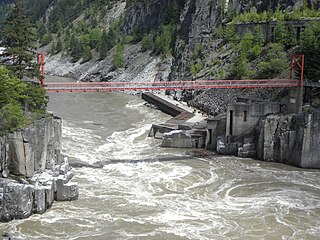
Hells Gate is an abrupt narrowing of British Columbia's Fraser River, located immediately downstream of Boston Bar in the southern Fraser Canyon. The towering rock walls of the Fraser River plunge toward each other forcing the waters through a passage only 35 metres (115 ft) wide. It is also the name of the rural locality at the same location.
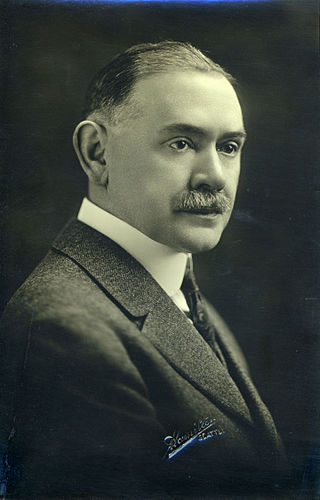
John Nathan Cobb was an American author, naturalist, conservationist, canneryman, and educator. He attained a high position in academia without the benefit of a college education. In a career that began as a printer's aide for a newspaper, he worked as a stenographer and clerk, a newspaper reporter, a field agent for the U.S. Fish Commission (USFC) and its successor the U.S. Bureau of Fisheries, as an editor for a commercial fishing trade magazine of the Pacific Northwest, and as a supervisor for companies in the commercial fishing industry. He took photographs during his extensive travels documenting scenes and people. In 1919, Cobb was appointed the founding director of the College of Fisheries at the University of Washington (UW), the first such college established in the United States.
The Halibut Treaty was a 1923 Canadian–American agreement concerning fishing rights in the northern Pacific Ocean. The treaty established the International Pacific Halibut Commission (IPHC) as a mechanism for the joint management of the Pacific halibut which, at that time, was in severe decline. The commission originally had four members but now has six, which are selected from industry and related government agencies. Half the members are Canadian and half are from the United States. The treaty also had a provision for a closed season, so halibut could not be fished during the more dangerous winter months. The treaty has been revised numerous times, often based on recommendations from the IPHC and its team of scientific researchers.
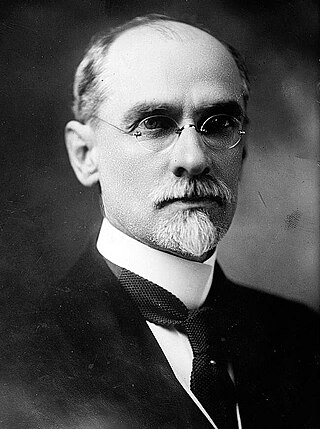
Hugh McCormick Smith, also H. M. Smith was an American ichthyologist and administrator in the United States Bureau of Fisheries.
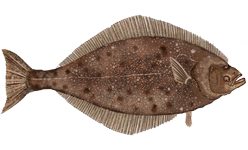
Hippoglossus stenolepis, the Pacific halibut, is a species of righteye flounder. This very large species of flatfish is native to the North Pacific and is fished by commercial fisheries, sport fishers, and subsistence fishers.
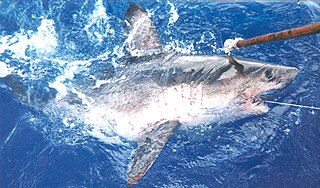
The salmon shark is a species of mackerel shark found in the northern Pacific ocean. As an apex predator, the salmon shark feeds on salmon, squid, sablefish, and herring. It is known for its ability to maintain stomach temperature (homeothermy), which is unusual among fish. This shark has not been demonstrated to maintain a constant body temperature. It is also known for an unexplained variability in the sex ratio between eastern and western populations in the northern Pacific.

A fish wheel, also known as a salmon wheel, is a device situated in rivers to catch fish which looks and operates like a watermill. However, in addition to paddles, a fish wheel is outfitted with wire baskets designed to catch and carry fish from the water and into a nearby holding tank. The current of the river presses against the submerged paddles and rotates the wheel, passing the baskets through the water where they intercept fish that are swimming or drifting. Naturally a strong current is most effective in spinning the wheel, so fish wheels are typically situated in shallow rivers with brisk currents, close to rapids, or waterfalls. The baskets are built at an outward-facing slant with an open end so the fish slide out of the opening and into the holding tank where they await collection. Yield is increased if fish swimming upstream are channeled toward the wheel by weirs.
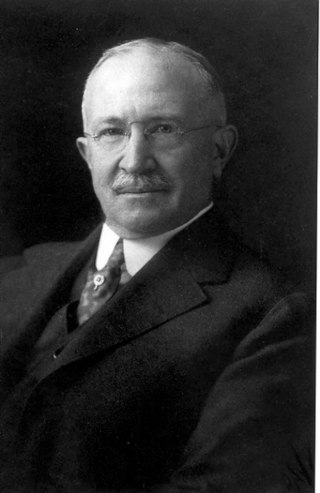
Charles Henry Gilbert was a pioneer ichthyologist and fishery biologist of particular significance to natural history of the western United States. He collected and studied fishes from Central America north to Alaska and described many new species. Later he became an expert on Pacific salmon and was a noted conservationist of the Pacific Northwest. He is considered by many as the intellectual founder of American fisheries biology. He was one of the 22 "pioneer professors" of Stanford University.

As with other countries, the 200 nautical miles (370 km) exclusive economic zone (EEZ) off the coast of the United States gives its fishing industry special fishing rights. It covers 11.4 million square kilometres, which is the second largest zone in the world, exceeding the land area of the United States.

The coastline of the Russian Federation is the fourth longest in the world after the coastlines of Canada, Greenland, and Indonesia. The Russian fishing industry has an exclusive economic zone (EEZ) of 7.6 million km2 including access to twelve seas in three oceans, together with the landlocked Caspian Sea and more than two million rivers.

The Marine Biological Association of the United Kingdom (MBA) is a learned society with a scientific laboratory that undertakes research in marine biology. The organisation was founded in 1884 and has been based in Plymouth since the Citadel Hill Laboratory was opened on 30 June 1888.
Archibald Gowanlock Huntsman was a Canadian academic, oceanographer, and fisheries biologist. He is best known for his research on Atlantic salmon and inventing the fast freezing of fish fillets in 1929.
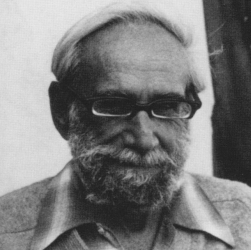
Martin David Burkenroad was an American marine biologist. He specialized in decapod crustaceans and fisheries science.
John Reynolds is a Canadian ecologist and holder of the Tom Buell BC Leadership Chair in Salmon Conservation and Management at Simon Fraser University. He is a specialist in fish ecology and conservation, particularly Pacific salmon in the Great Bear Rainforest, as well on extinction risk in marine fishes. He is Co-Chair of marine fish committee of the COSEWIC.

The redbanded rockfish, also known as the bandit, barber pole, flag rockfish, Spanish flag, Hollywood, convict, and canary, is a species of marine ray-finned fish belonging to the subfamily Sebastinae, the rockfishes, part of the family Scorpaenidae. It is found in the northern Pacific Ocean.

Steven J. Cooke is a Canadian biologist specializing in ecology and conservation physiology of fish. He is best known for his integrative work on fish physiology, behaviour, ecology, and human-dimensions to understand and solve complex environmental problems. He currently is a Canada Research Professor in Environmental Science and Biology at Carleton University and the Editor-in-Chief of the scientific journal Conservation Physiology.
Kenneth Arthur Pyefinch, MA, FRSE (1911–1979) was a 20th-century British zoologist and freshwater biologist. As its first Officer in Charge, he led the development of the Brown Trout Research Laboratory in Pitlochry into its establishment as the Freshwater Fisheries Laboratory with a national and international reputation for research.
References
- 1 2 Richard J. Dunn (2001). "William Francis Thompson (1888–1965): a Preeminent Fishery Biologist of the Early and Mid Twentieth Century" (PDF). Marine Fisheries Review. 63 (2): 1–4.
- ↑ Richard J Dunn (2001). "William Francis Thompson (1888-1965) and his pioneering studies of the Pacific halibut, Hippoglossus stenolepis". Marine Fisheries Review. 63 (2): 5–14.
- ↑ William Francis Thompson (1930), The biology of the halibut, with particular reference to marking experiments (Doctoral thesis), Wikidata Q115063396
- ↑ "William Francis Thompson". Thompson Senechal family. Retrieved 14 July 2018.